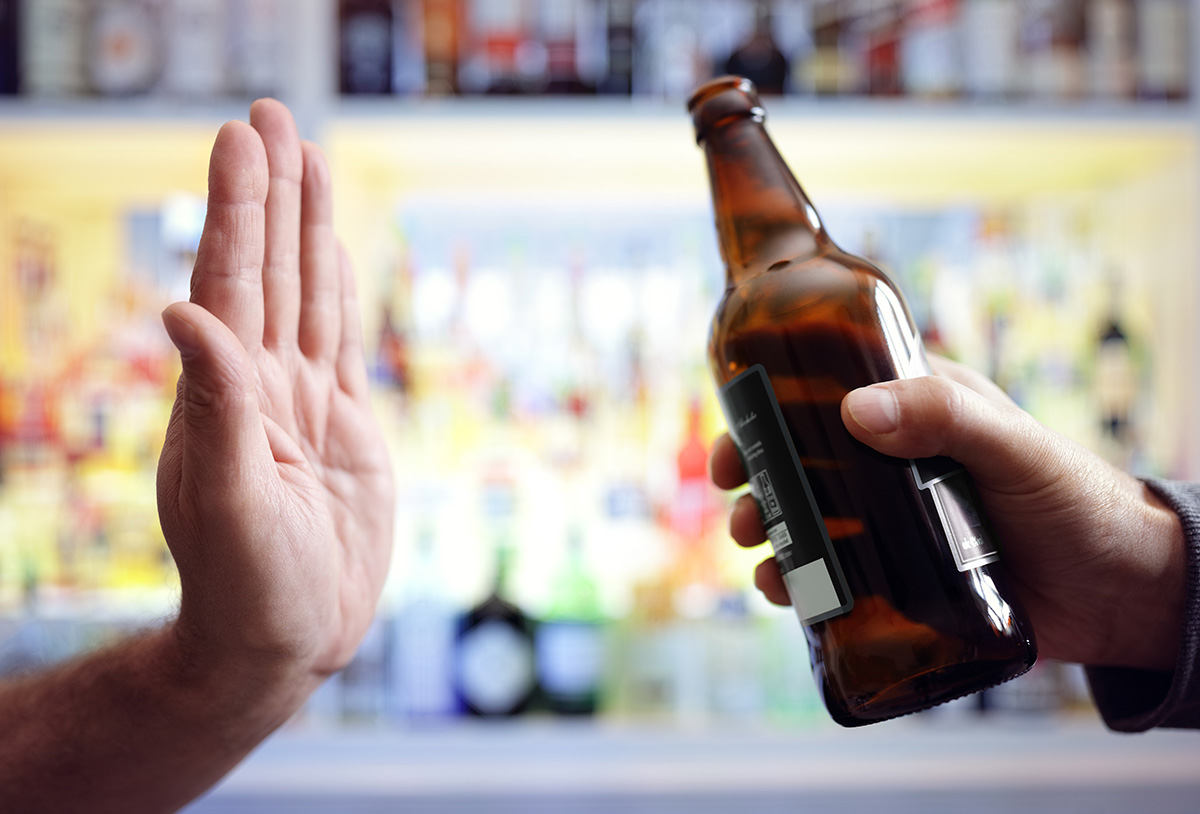

By: Lakeview Health
When you think about alcoholism, what images come to mind? Do you envision the scrappy, disheveled homeless person on the side of the road? Do you picture the terrorizing menace who abuses his children once he’s had one too many beers? What about losing jobs or cirrhosis or multiple DUIs? Is alcoholism merely an unfortunate and dire condition that other people have? Maybe you have a somewhat complicated relationship with alcohol. Perhaps you’ve tried to cut down in the past because it concerns you. Maybe you know you drink more than you should. But does that make you an alcoholic?
Understanding Alcohol Use Disorder
To understand alcoholism, we must define the medical condition of Alcohol Use Disorder. This is the clinical term professionals use to diagnose problematic drinking. In 2015, over 15.1 million Americans (6.2% of the population) had Alcohol Use Disorder. More than 10% of children live with a parent who struggles with alcohol problems. Alcohol-related factors attribute to nearly 88,000 annual deaths. This staggering figure makes alcohol the third leading preventable cause of death in the country. Up until 2013, the Diagnostic and Statistical Manual of Psychiatric Disorders had diagnoses for both Alcohol Abuse and Alcohol Dependence. In their recent revision, the DSM-V combined both diagnoses into Alcohol Use Disorder with mild, moderate, and severe specifications. The current criteria indicating an Alcohol Use Disorder include:
- Drinking more or longer than intended
- Wanting to cut down or stop drinking without success
- Spending excess time drinking or recovering from its effects (i.e., being hungover)
- Experiencing intense cravings for alcohol
- Drinking despite interference with home, school, or occupational issues
- Drinking despite interpersonal stressors with family or friends
- Reducing or stopping enjoyable activities to drink
- Drinking in hazardous situations (i.e., before driving, having unsafe sex, using heavy machinery)
- Drinking despite exacerbated mental health problems
- Experiencing increased tolerance to alcohol’s effects
- Experiencing withdrawal symptoms when cutting back or stopping from drinking
The DSM-V lists that meeting 2-3 of these criteria in the past year yields a mild specifier. 4-5 symptoms yield a moderate specifier, and 6 or more symptoms yield a severe specifier.
Understanding Tolerance and Withdrawal
As mentioned, both tolerance and withdrawal are significant symptoms of alcoholism. Let’s dive in further to unpack what each of these symptoms means.
Alcohol Tolerance
Have you ever been around someone taking back drink after drink after drink- but they still didn’t seem intoxicated? Are you that someone? All individuals metabolize alcohol differently. How we metabolize alcohol can depend on a variety of factors, including body weight, ethnicity, and sex. All alcoholics eventually develop a tolerance to alcohol. That’s because the more you drink alcohol, the more your brain and body adapt to alcohol in the system. As a result, you need to drink more to achieve the desired effects. This tolerance can build slowly- or quickly- depending on alcohol progression. Tolerance creates a double-edged sword. The individual is less likely to feel the harmful effects of alcohol. To create desirable outcomes, he or she will continue to drink. This phenomenon only continues to reinforce a developing tolerance and long-term resilience to the serious dangers of alcoholism.
Alcohol Withdrawal
When a chronic drinker stops consuming alcohol, he or she is vulnerable to withdrawal effects. Depending on a variety of factors, these withdrawal effects can range from mild, unpleasant discomfort to serious pain and life-threatening consequences. In severe alcoholism, symptoms can emerge within just 8 hours after the last drink. They tend to peak within 1-3 days, but they can persist for several weeks. Common withdrawal symptoms include:
- Depression
- Anxiety and restlessness
- Exhaustion and fatigue
- Irritability and mood swings
- Shakiness
- Disoriented thinking
- Nightmares
- Sweating, clammy skin
- Headaches
- Insomnia
- Appetite changes
- Nausea and vomiting
- Rapid heart rate
- Tremor in the hands or other body parts (often known as “the shakes”)
In severe cases, delirium tremens may occur. Delirium tremens can lead to seizures. These seizures can be fatal, and they require immediate medical assistance. The symptoms include:
- Severe agitation
- Fever
- Hallucinations (seeing, hearing, or feeling things that are not there)
- Severe confusion or disorientation to place, time, or location
- Seizures
What About Functional Alcoholism?
Despite having a few of the symptoms associated with Alcohol Use Disorder, many people are skeptical to believe they have a problem. This skepticism is, of course, valid. It’s easy to compare yourself to someone who has lost everything and justify why you are better off. It’s also easy to rationalize drinking if you haven’t experienced serious consequences. Alcoholism is, by nature, insidious. It does not always result in tremendous wreckage right away. Many people lead seemingly normal lives- and drink when nobody else is looking. Additionally, some surround themselves in certain social circles that normalize heavy alcohol consumption. That said, functional alcoholism can be just as dangerous as “regular” alcoholism. On the one hand, it may only take one consequence (such as losing a job, receiving a DUI, or experiencing a medical scare) to serve as a ‘wake-up call’ for change. However, some people will experience these consequences, but won’t be able to stop drinking. The vicious cycle will ensue, and the ‘functioning’ part of the disease can unravel quickly. Furthermore, the pressures of living a double life can be exhausting. You may feel enormous pressure to maintain an outward appearance of success and happiness. However, deep inside, there is often a longing, growing void consisting of anxiety and depression. In the face of this emotional tango, there is also the persistent terror of ‘being found out.’
Identifying That You Are An Alcoholic
It is often said that the first step of anything is recognizing the problem. By identifying your drinking issues, you start paving the path towards change. Despite some misconceptions, you do not need to hit rock bottom to seek help. You only need to have a willingness to work on your alcoholism. Depending on your circumstances, you will have access to several recovery resources. While some people may be able to quit drinking cold-turkey, this method is not always advised. As mentioned, the withdrawal process can be fatal. Furthermore, without monitoring and accountability, it can be easy to slip into old ways.
Medical Detox
Medical detox is usually the first step of treatment for Alcohol Use Disorder. In detox, you will receive 24/7 supervision and evaluation. This monitoring can be invaluable, especially if concerning symptoms should arise. The length of detox varies and depends on a variety of factors including your:
- Alcohol history (severity and longevity of drinking)
- Mental health status
- Physical health
- History of past detox episodes
Detox provides a comfortable environment during an uncomfortable experience. You will receive basic stabilization for your condition. You will also receive appropriate referrals for aftercare.
Inpatient Treatment
Inpatient treatment provides comprehensive medical and psychiatric support for your alcoholism. You will work with a treatment team that creates customized goals for your care. You will also receive access to recovery-based treatment that includes:
- Process groups
- Psychoeducational groups
- Relapse prevention
- Trauma support
- Spirituality
- Mindfulness-based stress reduction
- Expressive therapies
Treatment also includes individual therapy, 12-step meetings, family support sessions, and ongoing medical and psychiatric support. All clients live in structured residences and receive 24/7 monitoring.
Partial Hospitalization and Intensive Outpatient Treatment
Partial hospitalization (PHP) and intensive outpatient (IOP) programs provide ongoing, structured support. However, unlike inpatient treatment, clients live at home and commute to and from the facility for clinical services. PHP refers to full-day clinical services. IOP requires a few hours of treatment each day, but clients are free to work and attend school. In other words, you will balance your real-world responsibilities with your recovery. Both programs may be standalone treatment options. However, they also serve as fantastic step-down services after successfully completing inpatient care.
Aftercare
Recovery from alcoholism is not a static event. It is not “completed” in 30, 60, or even 365 days. It represents a lifetime of hard work, patience, and diligence. Therefore, to preserve your sobriety, you will need to find a viable aftercare strategy. This will vary from person to person, but aftercare may include:
- Involvement in 12-step groups like Alcoholics Anonymous
- Ongoing individual, family, or marital therapy
- Medication management and compliance
- Holistic care (yoga, acupuncture, diet, nutrition)
- Recovery peer support
It is important to have an ongoing relapse prevention plan. That means identifying your triggers and other ‘weak spots.’ It also means developing a concrete plan for what you would do in the event of a relapse.
Getting Help For Your Alcoholism
No matter your circumstances, Lakeview Health is here to help you get your life back on track. We understand the nuances of alcoholism. We also work hard to provide you with the support you need during this challenging process. Contact us today to learn more about how we can help you!





